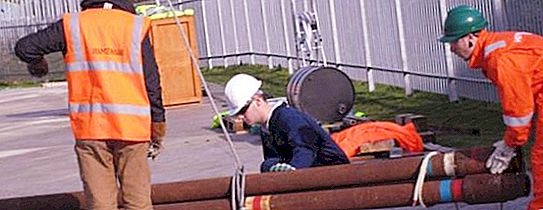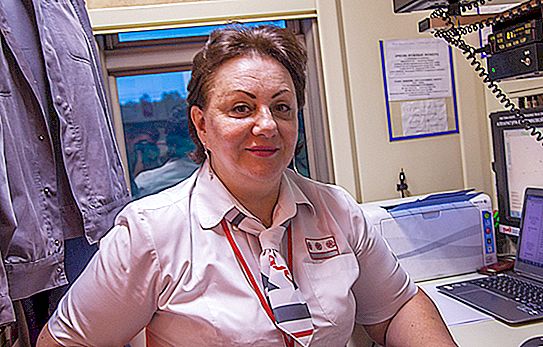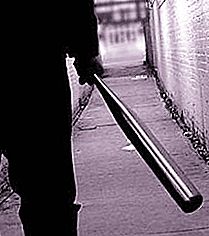Video: How to become a slinger/banksman in construction 2024, July
Slinger - who is it? This is a person who performs the strapping (which is also called slinging) of goods or various auxiliary special devices. This activity is carried out during loading and unloading operations using a lifting mechanism - a crane.
Profession
The unusual name of the profession often leads to the question: "Slinger - who is it?" The word comes from the Dutch strop - loop. And a person having the specialty in question, respectively, is a slinger. He is responsible for securing goods that are being prepared for transportation or movement. This is done according to certain rules.

But do not think that such a specialty is so easy - a slinger. Who is it? This is a trained person who is well versed not only in cargoes and methods of securing them, but also has special skills and training in working with them. Slinger needs good preparation. This is due to servicing large volumes of cargo, and this is a serious responsibility. If the worker is acting ineptly, then he may well be seriously injured. For example, a poorly secured load can overturn even a crane. It is terrible to imagine what consequences this may lead to. In addition, poorly fixed overall loads a strong wind can rip off the boom. And for the slinger, and for others, the working parts of machines and mechanisms are unsafe.
Therefore, specialists in this profession are required to undergo recertification annually, and if their professionalism is not enough, then retraining is practiced, which involves passing exams. It is also carried out with the advent of new technologies or equipment.
Certification
The slinger profession requires mandatory certification, the results of which determine the degree of specialist training. After it, a person is allowed to work. Scheduled certification is carried out annually. In addition, it is carried out during the transition to another enterprise, during a long break in work, at the request of engineering and technical workers.

Certification of slingers is designed to test the following knowledge and skills:
- knowledge of the signals that these experts exchange with crane operators;
- safe methods of hooking and securing cargo;
- the ability to determine whether ropes, hooks, containers and lifting devices are suitable for work;
- rules for the safe movement of various goods;
- techniques with which you can release people who come under stress, and the ability to provide first aid;
- knowledge of the crane device and its load capacity;
- the ability to choose the right slings and other lifting devices;
- proper harness (you must have the skills to hang containers);
- norms when filling containers;
- cargo storage procedure;
- safety rules when being near the crane and power lines.
Discharges

The categories of slingers are a designation of qualification. The specialist must constantly improve their knowledge and skills, improve their skills. All categories have their own individual directions, capabilities and requirements. So, a specialist of the third category will carry out the slinging of cargo, the dimensions of which do not exceed twenty-five kilograms, and a specialist with a discharge above will be able to perform more complex work.
Any state-owned enterprises or private firms employ highly qualified specialists, focusing on their certificates, which indicate the level of training of the slinger. There are many works that can only be performed by a professional, as they are very complex and responsible. Therefore, companies prefer to hire people with high ranks who are distinguished by conscientiousness, the necessary theoretical and practical knowledge, professionalism, work experience and diligence.
There are more than 5 categories in the profession of a slinger. The first is given to someone who is just starting to work in a specialty. A certificate is issued, which is updated when the employee improves their qualifications. The higher the rank, the more accessible the more complex level of work, respectively, the higher the salary.
If there is no time for training (for example, a busy schedule does not allow), then you can improve your qualifications directly at the workplace. And many enterprises train their employees on the job. Thus, getting a more highly qualified specialist directly during his career.
Duties

The slinger's responsibilities include a clear definition of the crane's payload, depending on the support and their departure. He must be able to do the harnessing of various cargoes and their hook, as well as correctly put in the right position for transportation. And professionally able to unhook the load-gripping device. The specialist must use slings taking into account the size and weight of the cargo, determine the serviceability of containers and mechanisms and use them for their intended purpose. In the event of a malfunction, be able to disconnect the cranes from electricity and have the skills to use a fire extinguisher.
Profession Features
The word "sling" was originally referred to as marine terminology: it meant a construction due to which it was possible to suspend various loads to brackets, traverses and hooks. These features of the profession have survived to this day.
The slinger himself ties the load, hooks it and monitors safety. When the burden is put in place, then it also unhooks the slings. This process is called slinging, although on sea moorings it has a slightly different name - slinging, and often - just mooring.
People who choose the profession of a slinger, who knows this for sure. They must understand in advance that for this specialty certain qualities and skills will be required. Such workers should be in good health, with an accurate eye and excellent coordination.

Sling training
You can study this profession in colleges, training factories or in industrial and technical schools. Sometimes it is possible to master a specialty directly at the production site itself, but usually this opportunity is provided with the condition that a person will continue to work in the same enterprise, often for a specified period.






